
Last month's News Impact Summit 2020 explored new ways for journalists to build a closer relationship with their readers.
As the coronavirus pandemic has forced people to spend a lot more time indoors, many newsrooms have found an opportunity within the crisis to foster deeper bonds with their readers.
If you are looking to revamp your audience engagement strategy, here are some of the main takeaways and case examples from the event.
Pandemic user behaviour is not that different from usual
Condé Nast has an output which is carefully underpinned by reader's habits and the pockets of time they put aside for deep dives.
For instance, Condé Nast's title Vogue knows when its British fly-by readers access the website: there is a small bump around 9 o'clock in the morning, a larger surge of visitors at around six to seven o'clock in the evening, and the most pronounced peak at around 10 o'clock at night. That late-night surge is consistent with international titles too.
This data matters when commissioning stories because that informs what readers want to unwind with and which platform will best serve that specific need at that moment.
But when readers went into lockdown, many publishers feared this could disrupt their habits but it turned out not to be the case. While there were dips in reading in March and April (in terms of hourly traffic across 10 Vogue titles), the data still bears the same pattern of reader behaviour.
"We are still having those update-me moments, those dedicated moments, those interrupted moments," explains Sarah Marshall, head of Vogue Global Network, Condé Nast. "It just so happens to be we're at home. So I'm very pleased to report that audiences are as big as ever and growing but they are remarkably unchanged by a pandemic."
Further reading: Inside Condé Nast's audience-first framework 'audience canvas'
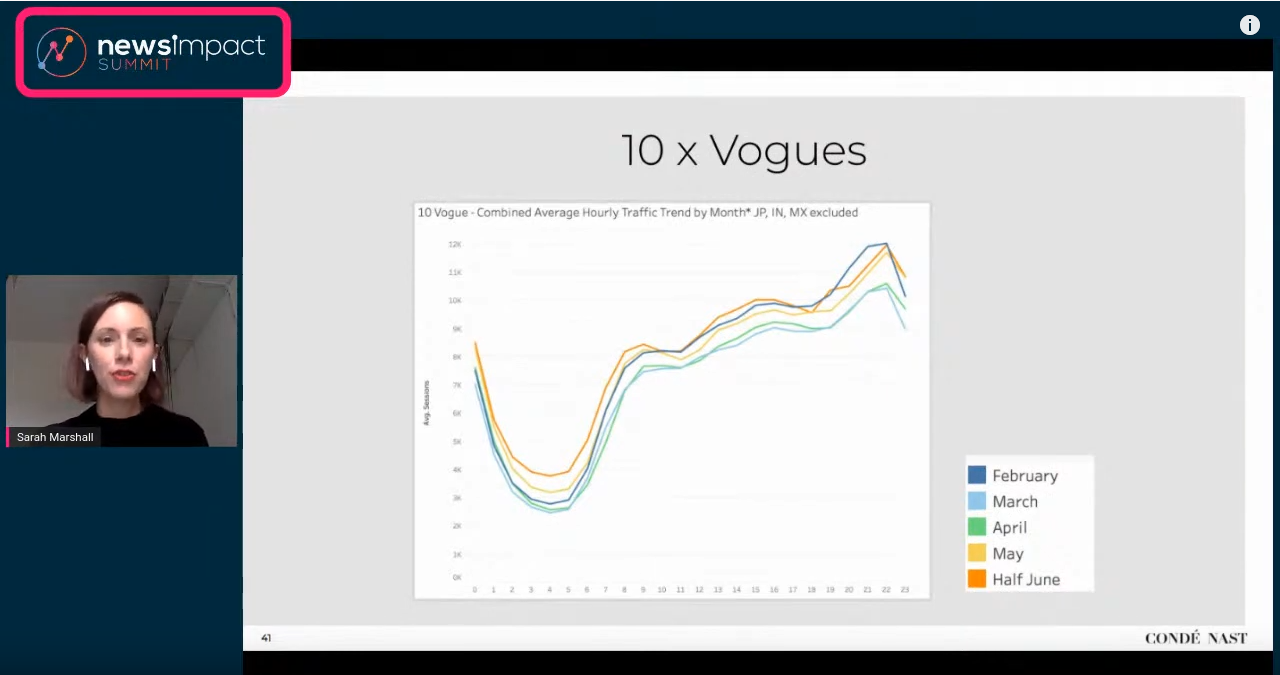
Differentiate on social media platforms
Social media, for all its flaws, does enable news organisations to reach more users in ways that are tailor-made for the platform. Although different platforms may require different publishing strategies, what matters is a consistent tone across the board. In the case of The Economist, this means chatty and informative.
On Twitter, for instance, concision matters as users come and go in quick bursts. So The Economist treats it like a radio station, recycling its 'greatest hits' in regular intervals. The opposite approach is taken on Facebook, where only the best stories are selected to go out every day.
LinkedIn, a place for professional networking, and Instagram, the destination for vibrant pictures, have surprisingly a lot in common. They share a posting frequency of about eight posts a day, with a lot of overlap in terms of captions.
It is Instagram, however, that The Economist is putting a lot of its effort in despite having the smallest following on this platform. But two thirds of its 5m followers are 18 to 34-year-olds, so it helps to get in with the young crowd.
In a six-month period last year, the publisher saw social media referrals increase by 180 per cent because of this strategy. Visits from social to the website directly grew 11 per cent points in the same period.
To stand out against the competition of picturesque content, its posts need to be equally as engaging. But the range of graphics, audiograms and Instagram Stories is labour-intensive, so it is important to cross-publish content on other platforms to get maximum efficiency and to have a crystal clear USP.
"You don't have to be everything to everybody," says Kevin Young, head of audience, The Economist. "If you want to aim for a certain audience, or specialise on a certain topic so that you stand out, then be bold."
Further reading: Inside The Economist's data-driven Instagram Stories strategy
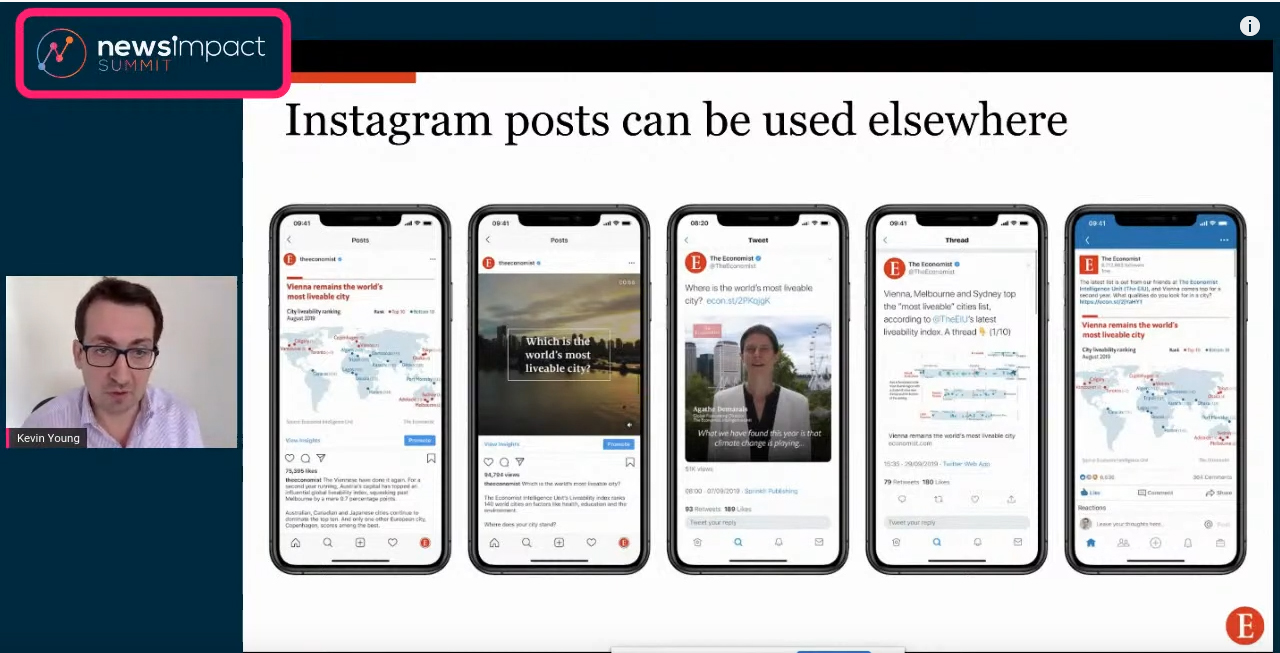
Communicate your business decisions
Much has been said about the coronabump - a surge in subscriptions due to heightened interest around news coverage of covid-19. Two examples show this is not an accident but a result of a 'communication strategy'.
El País is a Spanish daily newspaper that had a metered paywall in the works for nearly three years when the pandemic came around. 1st of March has been long earmarked as launch day and the publisher spent many weeks explaining its audience how the new paywall will work: you can read 10 pieces free per month before being asked to subscribe.
When the pandemic hit, El País decided to push the subscription programme until May because it did not want to deny readers vital coverage. The website hit 180m unique users and 1bn page views in April. Unfortunately, this meant it had to backtrack on all the marketing messaging up until that point.
"This may sound obvious, but it is not simple [for big] news organisations to go openly and explain what is going on, [that] what you already told to the public, you had committed to launch a specific model, why you did this," explained El País managing director Borja Echevarría.
It chose to be transparent about the decision but also give readers the chance to pay early. That meant there was a two-month testing period to iron out the subscription user experience and process. By the time the subscription programme went live in May, it really took off. El País was hoping to get 50,000 subscribers by October but hit that target in June. It now has 64,000 subscribers.
Elsewhere in France, Mediacités is an investigative journalism website with four local editions. Prior to March, it focused on covering municipal elections during the previous five months. So when the pandemic hit, it found itself out of its depth covering scientific topics with seven journalists.
Fortunately, nearly a year ago it switched to a membership model. It now has more than 4,000 members paying weekly or monthly fees, which represents about 90 per cent of its revenue.
These members were indispensable for navigating through covid-19 coverage. The day after France went into lockdown, Mediacités put up a new landing page titled: 'our cities in times of coronavirus'.
Inspired by the surveys of German publisher Krautreporter, it also allowed readers to submit their burning questions and provide any expertise they had: it is handy when a reader is also an epidemiologist.
Mediacités shifted its coverage to simple explainer stories to try and understand the science. In three weeks, it received 300 questions but only managed to answer ten per cent of them. The questions revolved around rules more than anything else, but was still very far from its speciality.
In terms of traffic, 375,000 unique visitors flocked to the site in March, but Mediacités wanted to turn that momentum into memberships. It had initially made a lot of stories free to the public in March, but later reintroduced the paywall to all stories except for the answered questions.
Publishing members testimonies did not prove effective and the publisher eventually gave up that format. It then ramped up its membership marketing on the website and through emails communicating how their money is spent and why it is needed. Result? Mediacités welcomed 800 new members between March and June.
"We were a bit shy at the beginning of the pandemic when it came to asking for money," says Pierre Leibovici, audience engagement journalist, Mediacités. "Throughout the pandemic, we have been saying 'If you don't support us, we'll die and you need this information, so please support us'."
Further reading: How Spain's eldiario.es attracted 20,000 new members in one month with an editor's heartfelt letter during the coronavirus pandemic
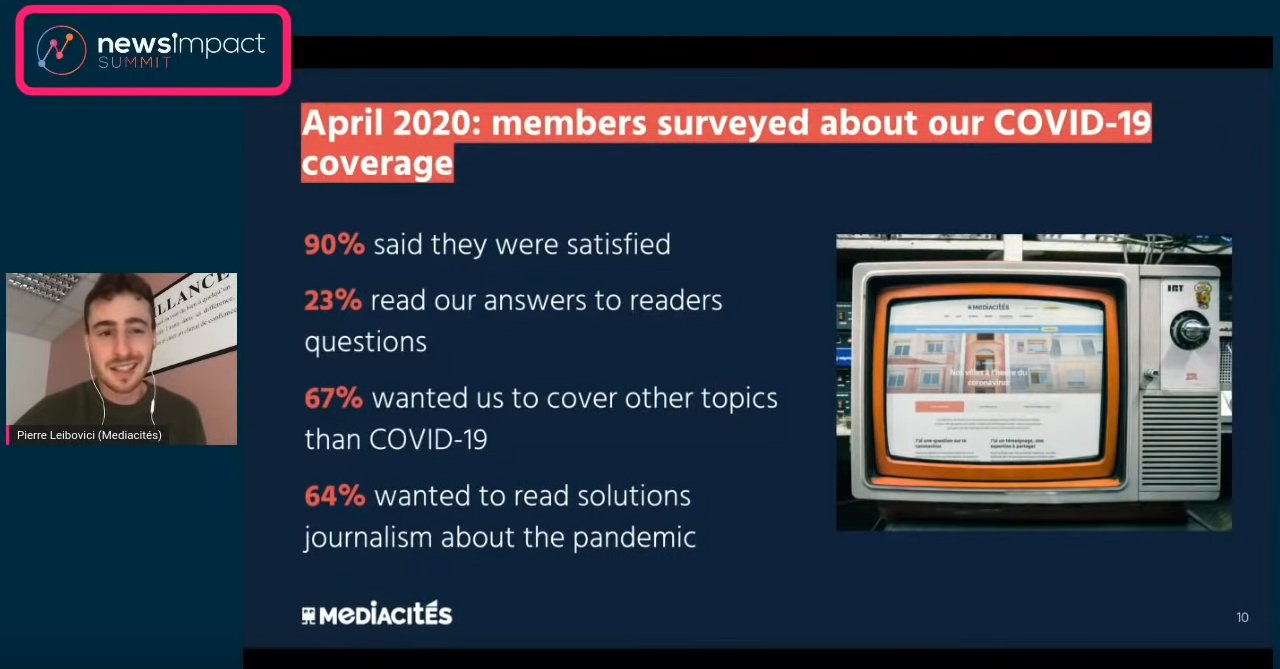
Increasing representation in news coverage
One of the core business arguments for increasing diversity of voices in the news cycle is that it helps to discover new audiences. This is one ball newsrooms cannot afford to drop, even in times of depleted resources and scattered teams.
The BBC's 50:50 project is a well-known initiative that the UK public broadcaster launched in 2017 with the aim of achieving gender parity in its news coverage (excluding significant voices like Prime Ministers and news presenters, but including every other on-air voice).
Now, BBC is a big organisation. It did not set out to change every station, but start small and spread this target out gradually. By March 2020, two thirds of BBC' 500 teams involved were hitting at least 50 per cent gender parity, up from just over a half the previous year, and only one quarter of teams the year before that.
The project was inspired by Ross Atkins, BBC News presenter of the Outside Source programme who noticed the lack of voices in a BBC radio bulletin. Now, 39 per cent of people have noticed team's efforts to promote women's voices, and a third of women aged 25 to 34 say they are consuming more content as a result.
"Putting audiences first through ensuring we are reflecting them in our content means that we are getting more consumers," says Nina Goswami, BBC creative lead for the project. She confirmed that BBC is now looking to implement similar projects for other forms of representation.
Further reading: How increasing diversity helps news organisation to deepen coverage
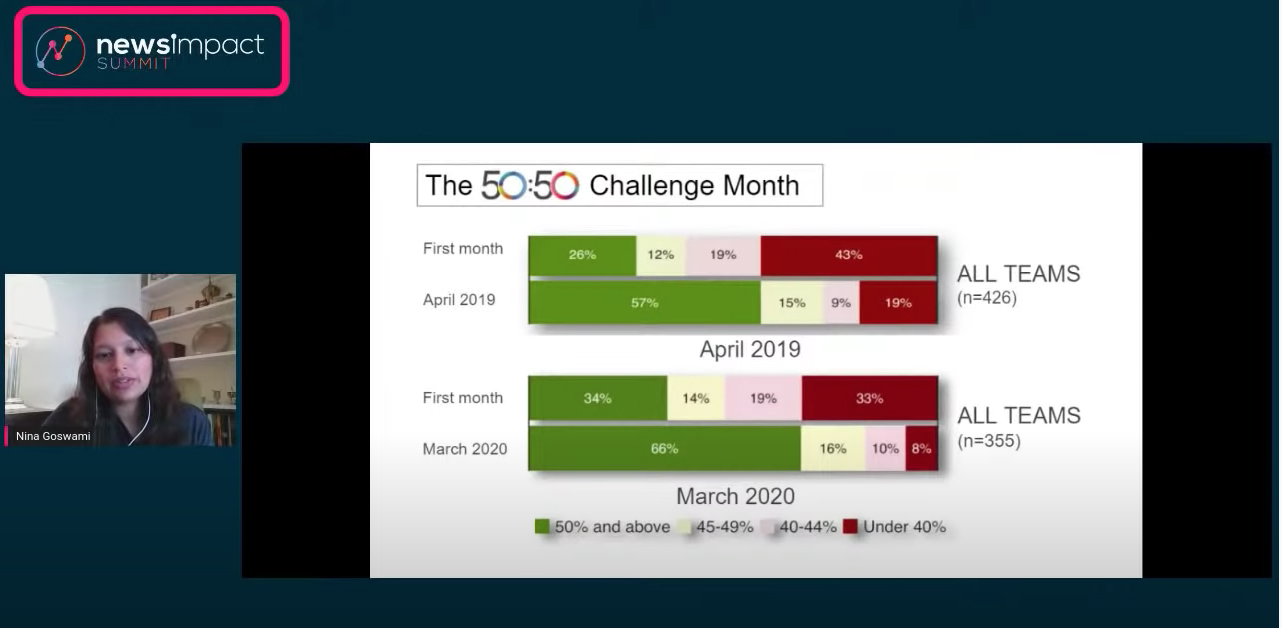
Putting the spotlight on under-represented communities
The Tsuut'ina Nation is a First Nation located in southern Alberta, in Canada, home to indigenous people whose stories rarely made it to the mainstream media in North America. That was until CBC decided to set up pop-up bureaus for reporters to work from the heart of the community, and brought these stories into national focus.
But that approach alone only gets you so far and will fail without reporters who can become part of the community, earn the trust of the locals and tell those stories without playing to the stereotypes. Being a local herself, Livia Manywounds discovered a gold mine of stories waiting to be told during her recently finished stint as a reporter for CBC Calgary.
It was not easy at first. The locals mistrusted mainstream media and were reluctant to do interviews. Once word got around that a journalist working for the national public broadcaster understood important cultures and sensitivities, a "ripple effect" formed and exclusives followed with stories from racism to royalty.
There is no better example than a first interview Manywounds gained with a bereaved mother of a First Nation hockey player.
"The mother was not interested in talking to the media, especially during a time of grief," she explains.
"Eventually I built trust and respect with the mother and she finally opened up and gave me the opportunity to share her story. It's moments like these which really stand out, it's just being genuine, being yourself and having that sincerity for others especially during times of grief and sadness."
Further listening: Inside CBC Calgary's pop-up bureaus where mobile journalism is a tool to report from the heart of the community
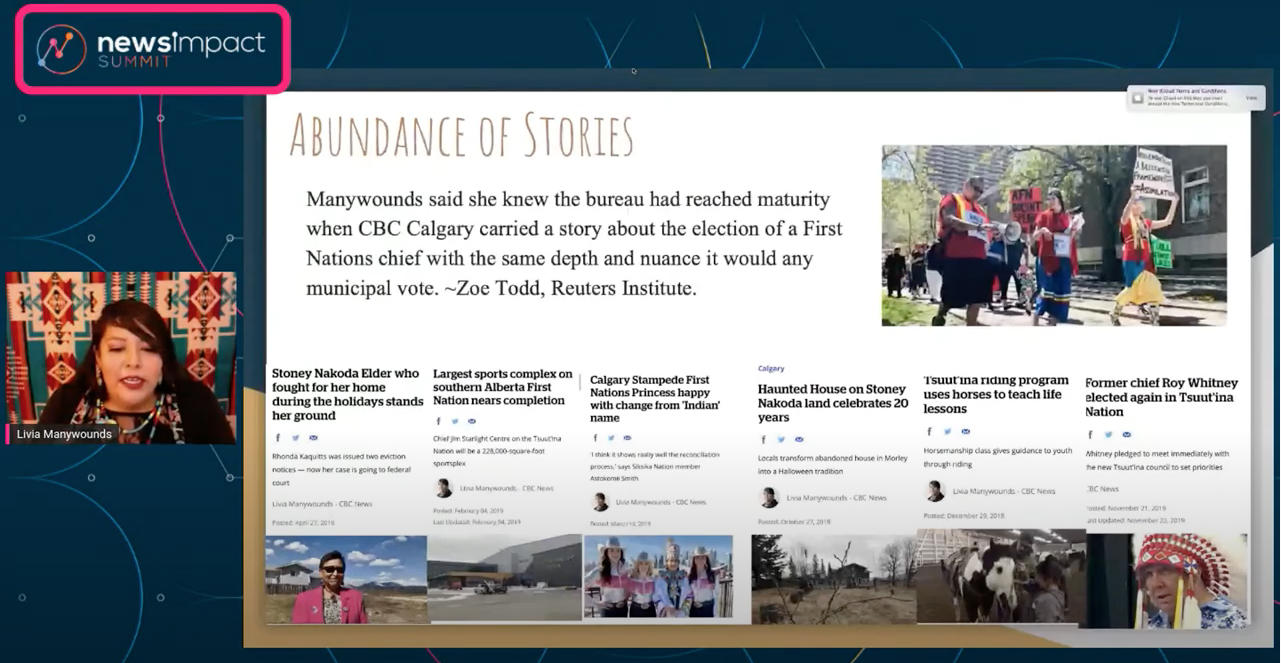
Calling all Telegram users: join our journalism news channel to receive an audio update every Monday morning, and our journalism jobs channel to find out the latest opportunities
Free daily newsletter
If you like our news and feature articles, you can sign up to receive our free daily (Mon-Fri) email newsletter (mobile friendly).
Related articles
- UAE's The National uses free reader registration to counter the decline of SEO
- How to get started with user needs: learnings from the Reuters Institute, Metro.co.uk and smartocto
- Rachel Duffy, senior social media editor of The Telegraph, on using Reddit for news
- The Forward removed its paywall and generated 37 per cent more revenue
- Journalism.co.uk reader responses: what we have learned so far from our audience survey









